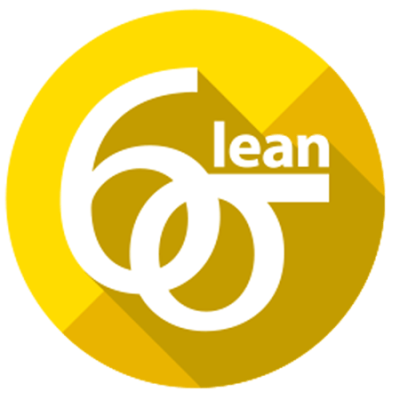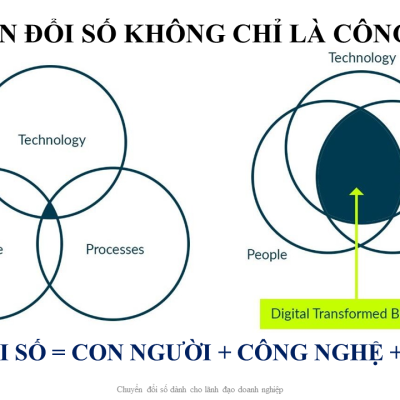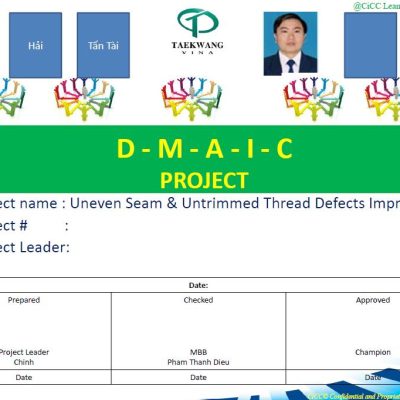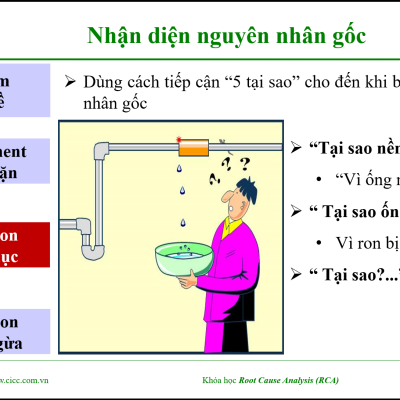Black Belt Lean Six Sigma Đẳng cấp Đai Đen và Bảo vệ Dự án Black Blet
Vào ngày 22 – 23 tháng 11 năm 2022. MBB. Phạm Thanh Diệu – CiCC và BLD LGD đã tổ chức lễ bảo vệ cho 22 Dự án Đai đen Lean Six Sigma trong đó có 20 Dự án được chứng nhận. Đẳng cấp CiCC-LGD Certified Lean Six Sigma Black Belt là một chuyên gia thành thạo Phương pháp Lean Six Sigma, người lãnh đạo các dự án cải tiến phức tạp, thường là toàn thời gian. Một Đai đen Lean Six Sigma sở hữu sự hiểu biết thấu đáo về tất cả các khía cạnh của Phương pháp Lean Six Sigma bao gồm trình độ năng lực cao. Theo trình tự hoàn thiện trong các giai đoạn Xác định, Đo lường, Phân tích, Cải thiện và Kiểm soát (DMAIC). Đai đen Lean Six Sigma hiểu cách triển khai, thực hiện, diễn giải và áp dụng Lean Six Sigma ở mức độ thành thạo nâng cao.
Ngoài bắt buộc phải hoàn thành một Dự án có độ khó cao và giá trị tiết kiệm/ cải tiên mang lại cao cho LGD. Black Belt đã là Green Belt và tiếp tục phải hoàn thành chương trình học lý thuyết 10 ngày nâng cấp từ GB lên BB, và đạt trên 70% điểm kiểm tra lý thuyết do CiCC cung cấp. Bài kiểm tra Đai đen cuối kỳ Lean Six Sigma được CiCC chứng nhận là một bài kiểm tra gồm 150 câu hỏi, bảo mật và thi online qua phần mềm, được giám sát với thời gian quy định là 4 giờ.






Yêu cầu
Để đạt được danh hiệu chuyên nghiệp Đai đen được chứng nhận, các ứng viên phải:
- Hoàn thành khóa học Green Belt (10 ngày) do CiCC tổ chức cùng LGD
- Thi đạt Green Belt trên 70% điểm lý thuyết
- Đã hoàn thành 01 Dự án Green Belt mang lại giá trị tiết kiệm ít nhất là 50K$/Năm
- Đã vượt qua kỳ thì đầu vào cho lựa chọn ứng viên Black Belt
- Được BLĐ LGD và Các Lead Champion và Champion của LGD lựa chọn
- Đã đăng ký và được phê duyệt ít nhất 03 chủ đề Cải tiến là Dự án Black Belt
Sự chuẩn bị và quá trình chứng nhận LSS Black Belt
Hoàn thành chương trình học lý thuyết BB 10 ngày (đồng thời phải hoàn thành Dự án Cải tiến Black Belt)
Lean Six Sigma Green Belt Upgrade to Black Belt Theory Training
Introduction:
The program “GB upgrade to BB” is designed for LGD to provide in advance of Lean Six Sigma Theory and Lean Six Sigma Tools using and application. It also provides company’s key staff “BB” the ability to apply the appropriate tool for Lean Six Sigma Project of continuous improvement in their respective areas.
Besides the Lean Six Sigma knowledge and technical, participants also know how to promote, maintain and manage Lean Six Sigma and how to built culture that employees always have the ability to detect, identify, select and proficient use of methods and Lean Six Sigma tools to solve problems and find optimal innovative solutions for customer and company in the future.
Duration:
10 days (2-2-2-2-2) in 5 months.
Purpose:
To provide Lean Six Sigma Black Belts with additional quality tools and statistical tools that are indispensable to run projects of greater complexity and that have a greater impact on the overall organization’s performance.
Target Audience:
Lean Six Sigma Black Belt candidates who are trained Lean Six Sigma Green Belts with a proven history for success and excellent interpersonal skills. Leading teams in completing process improvement projects is one of the most critical elements for a successful Lean Six Sigma initiative.
Learning Objectives
At the end of this workshop, participants will be able to:
- Apply statistical software (Minitab) in data collection and data analysis.
- Understand the importance of mastering key foundational statistical tools (e.g., the normal theory).
- Apply advanced statistical tools in the MEASURE, ANALYZE and CONTROL phases of the DMAIC methodology.
- Coach Green Belts to improve the outcomes of their green belt projects.
Major Topics
- Introduction to Minitab (for application throughout the course)
- The normal theory, and transformation to normality
- Process capability
- Sampling and measurement system analysis (MSA)
- Hypothesis testing
- Regression analysis
- Design of experiments (DOE)
- Advanced Control charts
Note: Certification as a Lean Six Sigma Black Belt requires successful completion of this course, a passing grade on the final examination, and submission of a detailed report of 02 successful projects.
Method Key:
- Example = example from outside data
- Exercise = exercise on case study or outside data
- Project exercise = exercise on the participant’s actual project
Program Contents:
| MODULE | TOPICS |
| Introduction | · Course purpose & objectives |
| · Warm-up activity | |
| Storyboard Gallery | · Gallery walk with storyboards displayed |
| · Feedback | |
| Introduction to Minitab | · Opening Minitab
· Getting data · Saving files · Time plots · Histograms · Dot plots |
| Introduction to Minitab (cont.) | · Scatter plots
· Pareto charts · Individuals control charts · Review |
| Normal Theory | · Understanding variation |
| Wrap-up | · Summarize |
| · Preview next day | |
| · Evaluation | |
| Introduction | · Review evaluations Day 1 |
| · Questions and answers | |
| Normal Theory | · Understanding variation
· Normal theory · Testing for Normality · Transforming to Normality |
| Normal Theory (cont.) | · Choosing a transformation |
| · Using transformed data with process sigma and control charts | |
| Advanced Process Sigma | · Using Method 1 or Method 2 to calculate process sigma |
| · Review of process sigma concepts | |
| · Understanding shift | |
| · Process analysis | |
| · How to calculate shift | |
| Wrap-up | · Summarize |
| · Preview next day | |
| · Evaluation | |
| Introduction | · Review evaluations Day 2 |
| · Questions and answers | |
| Tests of Hypothesis: Making Comparisons | · Using distributions to judge differences
· Comparing two group averages: The t-test · Overview of hypothesis tests · Comparing two group averages with matched data: The paired t-test · Comparing two or more group averages: ANOVA, part 1 |
| Tests of Hypothesis: Making Comparisons (cont.) | · Comparing variation between groups: ANOVA, part 2 |
| · Comparing two or more group proportions: The chi-square test | |
| Advanced Control Charts | · Variations and individuals charts |
| Wrap-up | · Summarize |
| · Preview next day | |
| · Evaluation | |
| MODULE | TOPICS |
| Introduction | · Review evaluations Day 3 |
| · Questions and answers | |
| Advanced Control Charts (cont.) | · Variation and individuals charts |
| · Control charts for discrete data: p, np, c, and u charts | |
| · Control charts for discrete data: p, np, c, and u charts (cont.) | |
| Advanced Control Charts (cont.) | · Control charts for high-volume processes with subgroups: x-bar, r charts |
| · Control charts for detecting small shifts quickly: EWMA charts | |
| · Using control charts | |
| Wrap-up | · Summarize |
| · Preview next day | |
| · Evaluation | |
| Introduction | · Review evaluations Day 4 |
| · Questions and answers | |
| Improving Measurement Systems | · Background |
| · Gage R&R study | |
| Improving Measurement Systems (cont.) | · Gage linearity study |
| · Checking a measurement system for discrete data | |
| Wrap-up | · Summarize |
| · Preview next week | |
| · Evaluation | |
| Introduction | · Review evaluations Day 5
· Questions and answers |
| Project Presentations | · Share storyboards |
| · Share storyboards (cont.) | |
| Quiz | · Quiz |
| Regression Analysis | · Introduction to linear regression |
| Regression Analysis (cont.) | · Basics of regression analysis |
| · General procedure for doing regression analysis (one X) | |
| Wrap-up | · Summarize |
| · Preview next day | |
| · Evaluation | |
| Introduction | · Review evaluations Day 6 |
| · Questions and answers | |
| Regression Analysis (cont.) | · Regression analysis with transformed data
· Introduction to multiple linear regression · Multiple linear regression (cont.) · Working with multiple regression |
| Regression Analysis (cont.) | · Working with multiple linear regression (cont.)
· General procedure for multiple regression · Introduction to curvilinear regression and exercises · Regression with discrete X’s |
| Wrap-up | · Summarize |
| · Preview next day | |
| · Evaluation | |
| MODULE | TOPICS |
| Introduction | · Review evaluations Day 7 |
| · Questions and answers | |
| Regression Analysis (cont.) | · Logistic regression (discrete Y’s) |
| Sampling | · Determining sample size |
| Sampling (cont.) | · Determining sample size (cont.)
· Population versus process sampling · Sampling approaches · Sampling approaches (cont.) |
| Design of Experiments (DOE) | · Introduction to Design of Experiments |
| · Computer simulation | |
| Wrap-up | · Summarize |
| · Preview next day | |
| · Evaluation | |
| Introduction | · Review evaluations Day 8 |
| · Questions and answers | |
| DOE (cont.) | · Computer simulation (cont.)
· The factorial approach to designed experiments · Designing a full factorial experiment: example · Doing the experiment: example · Analyzing an experiment: example |
| DOE (cont.) | · Reducing experimental trials: The half- fraction and confounding
· Reducing experimental trials: Other fractional designs · Planning and preparing for a designed experiment |
| Wrap-up | · Summarize |
| · Preview next day | |
| · Evaluation | |
| Introduction | · Review evaluations Day 9 |
| · Questions and answers | |
| DOE (cont.) | · Computer simulation (II) |
| Case Study: Advanced Tools Review | · Part 1
· Part 2 |
| Case Study: Advanced Tools Review (cont.) | · Part 3
· Part 4 · Part 5 |
| · Solutions
· Storyboard | Exercises |
| Wrap-up | · Summarize |
| · Evaluation | |
| Final Exam |
Participant:
- Green Belt, who are selected to become Black Belt Lean Six Sigma
Program Cost: Refer Quotation for Detail
Note: This cost is including Accommodation, Travel, Training material, Certificate.
Number of participants:
Arrange by customer, but to good maintain classes, number of participants should be not excess 25 people.





























